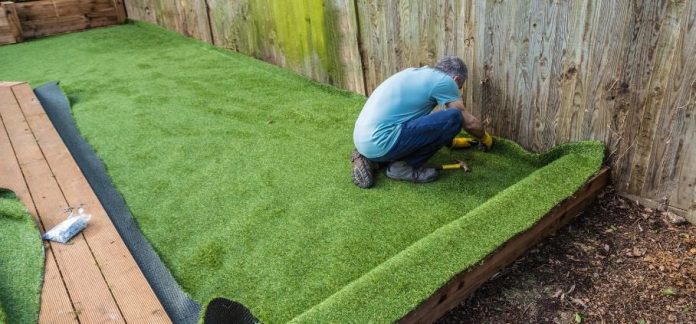Installing artificial grass may seem like a daunting task, but with these expert tips, you’ll be able to do it like a pro! From choosing the right turf to preparing the ground correctly, we’ll make sure your installation is a success. Follow our tips and you’ll have a beautiful, green lawn that will last for years to come. Let’s get started!
Table of Contents
Choose the right type of artificial grass for your needs
When you are looking to install artificial grass for your lawn or landscape, it is important to make sure that you choose the right type for your particular needs. Artificial grass comes in various sizes, different types and textures – all of which can create a very different look for your outdoor space. Be sure to do your research beforehand because artificial grass in Miramar, FL, has the most diverse selection on the market. Whether you’re looking for something more natural-looking, pet-friendly, or artificial grass to cover an uneven surface – having the right knowledge will help you find the best product that meets your desired outcome.
Prepare the ground for installation
Preparing the ground for the installation of artificial grass is an essential step to ensure a successful outcome. With proper groundwork, you can save yourself from potential problems after the installation is complete. Experts recommend cleaning and leveling the surface before laying the artificial grass. This will ensure better drainage, and a more natural look, and reduce chances of insect infestations or other problems that may result from improper installation. Be sure to consult with your local home improvement store or certified installer for the best techniques and materials to use when preparing the ground for artificial grass installation.
Install a drainage system
Installing a drainage system as part of your artificial grass installation is an important step in achieving a healthy and successful lawn for years to come. Ideally, drainage should be considered before the synthetic turf is installed, as the right type of sub-base can drastically improve water displacement. Make sure to consult with an experienced professional and get their advice on what kind of drainage system would work best with the topography of your property. Drawing moisture away from the surface of your lawn will prevent mold and mildew buildup that can damage both your turf and even the foundation of any structures nearby. With some essential pre-planning, your artificial grass installation is sure to be a success!
Lay the artificial grass in the place
An artificial grass installation can be a lengthy and tedious task, but taking the time to properly lay the material in place can make all the difference in terms of quality and longevity. To ensure a successful install, there are several important considerations such as positioning the turf correctly, evenly distributing weight across it, and avoiding issues like wrinkles and bumps. Experts recommend laying out your artificial grass before the adhesive or primer sets to ensure it is properly aligned with ladders or other support structures. By doing this beforehand, you can avoid costly mistakes that could impede your project’s progress down the line.
Infill the artificial grass
Installing artificial grass is an excellent way to create a beautiful, low-maintenance lawn that can last many years. However, one key step in the installation process is making sure to infill the grass with either rubber or sand. This helps to create an even surface and contributes to the longevity of your new grass.
Installing artificial grass is a big project, but following these five expert tips can help make your project as successful and straightforward as possible. Don’t be intimidated – with the right type of artificial grass, proper ground preparation, a drainage system for water, careful placement of the grass roll, and infill for additional support, you can easily install artificial grass that will look amazing and provide years of maintenance-free lawn care!








